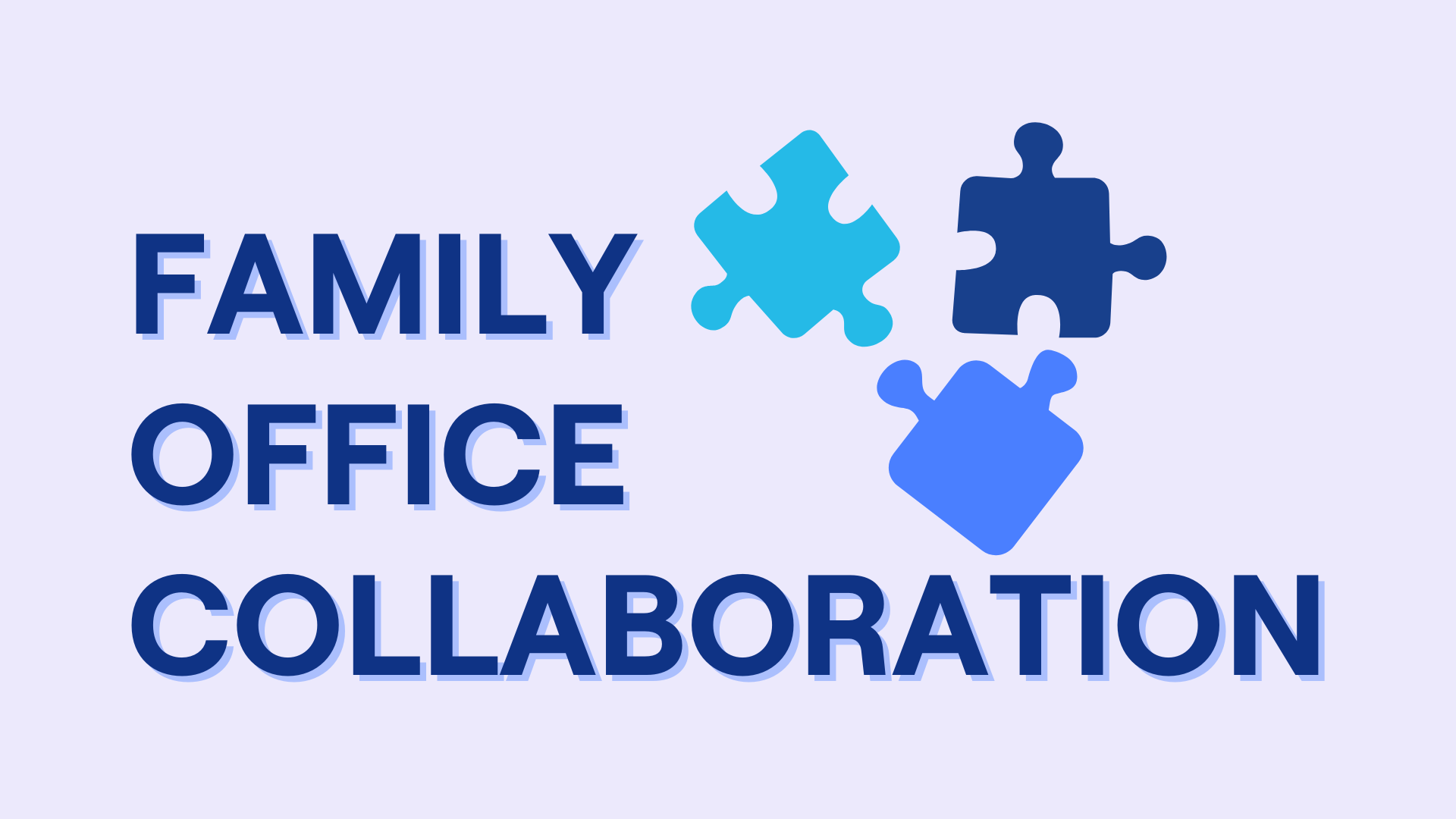In the dynamic landscape of family offices, effective communication and seamless collaboration are paramount for success. With teams often dispersed across various locations, the need for tools that bridge the gap and foster teamwork has become increasingly apparent. In this blog post, we will explore the vital role that collaboration tools play in connecting family office teams, ensuring everyone is on the same page and contributing to the overall success of the organisation.
The Importance of Collaboration in Family Offices
Family offices typically involve a range of professionals, including financial advisors, legal experts, investment managers, and administrative staff. The complexity of their responsibilities requires constant communication and collaboration to make informed decisions. Whether managing investments, handling legal matters, or overseeing day-to-day operations, effective teamwork is crucial for achieving optimal results.
Challenges in Traditional Communication
Traditional communication methods, such as email and phone calls, often fall short when it comes to managing the multifaceted tasks of a family office. Information can get lost in lengthy email threads, and coordinating schedules for conference calls can be a logistical nightmare. As family office teams are frequently dispersed geographically, these challenges can hinder productivity and lead to misunderstandings.
Enter Collaboration Tools
Collaboration tools are designed to address these challenges by providing a centralised platform for communication, document sharing, and project management. These tools offer a myriad of features that streamline workflows, enhance communication, and promote efficient teamwork.
- Real-time Communication: Collaboration tools often include instant messaging and chat functionalities that enable real-time communication. This feature is particularly beneficial for family office teams spread across different locations and time zones. Team members can quickly exchange information, seek clarification, and make decisions without delays.
- Document Sharing and Version Control: Family offices deal with a multitude of documents, from financial reports to legal contracts. Collaboration tools offer secure and centralised repositories for document storage, ensuring that all team members have access to the latest versions. This eliminates the confusion that can arise from multiple versions circulating within the team.
- Project Management: Complex projects within family offices can benefit from dedicated project management features offered by collaboration tools. These tools allow teams to create tasks, set deadlines, and track progress in a transparent and organised manner. This ensures that everyone is aware of their responsibilities and the overall project timeline.
- Video Conferencing: Face-to-face communication is invaluable, especially when dealing with sensitive matters or complex discussions. Collaboration tools often include video conferencing capabilities, allowing family office teams to conduct virtual meetings with ease. This fosters a sense of connection among team members, even if they are miles apart.
- Security and Compliance: Family offices handle sensitive financial and legal information, making security a top priority. Collaboration tools are equipped with robust security features, such as encryption and access controls, to safeguard confidential data. This ensures compliance with regulatory requirements and instils trust among clients.
Benefits of Implementing Collaboration Tools in Family Offices
The adoption of collaboration tools in family offices yields a multitude of benefits, revolutionising the way teams operate and contributing to the success of the organisation.
- Enhanced Communication: Collaboration tools facilitate seamless communication, breaking down the barriers created by geographical distances. Real-time messaging, video conferencing, and discussion threads enable team members to communicate effortlessly, fostering a sense of connectivity among dispersed teams.
- Improved Team Productivity: By providing a centralised platform for communication and project management, collaboration tools streamline workflows and enhance overall team productivity. Tasks are organised, and deadlines are clear, reducing the likelihood of misunderstandings and delays. This efficiency translates into better service for clients and more effective management of family assets.
- Greater Transparency and Accountability: Project management features within collaboration tools promote transparency by offering a clear overview of tasks, responsibilities, and project timelines. This transparency enhances accountability as team members are aware of their roles and can track the progress of their colleagues. It also simplifies performance evaluations and contributes to a culture of responsibility within the organization.
- Time and Cost Savings: The real-time nature of collaboration tools reduces the need for lengthy email exchanges and time-consuming meetings. Quick decision-making and efficient communication translate into significant time savings for family office teams. Additionally, the consolidation of tasks and information on a single platform reduces the likelihood of errors and rework, saving both time and costs.
- Flexibility and Remote Work Enablement: Collaboration tools empower family office teams to work flexibly, allowing members to collaborate from anywhere with an internet connection. This flexibility not only accommodates the diverse needs and preferences of team members but also supports the growing trend of remote work. This is particularly beneficial for family offices with team members located in different regions or countries.
- Client Confidence and Satisfaction: The security features embedded in collaboration tools, such as encryption and access controls, contribute to maintaining the confidentiality of sensitive client information. This not only ensures compliance with regulatory requirements but also builds trust and confidence among clients. The ability to provide efficient and secure services enhances client satisfaction, contributing to client retention and positive referrals.
- Adaptability to Changing Business Dynamics: Collaboration tools are designed to evolve with the changing needs of businesses. As family offices adapt to new technologies and market dynamics, these tools can be updated and customised to meet the unique requirements of the organisation. This adaptability positions family offices to stay agile in an ever-changing financial landscape.
Family Office Collaboration
In conclusion, collaboration tools are indispensable for family office teams seeking to enhance communication and foster teamwork.
The ability to connect dispersed teams, streamline workflows, and ensure everyone is on the same page contributes significantly to the overall success of family offices.
As the business landscape continues to evolve, embracing these tools becomes not just a choice but a strategic necessity for family offices aiming to stay ahead in an increasingly competitive environment.



